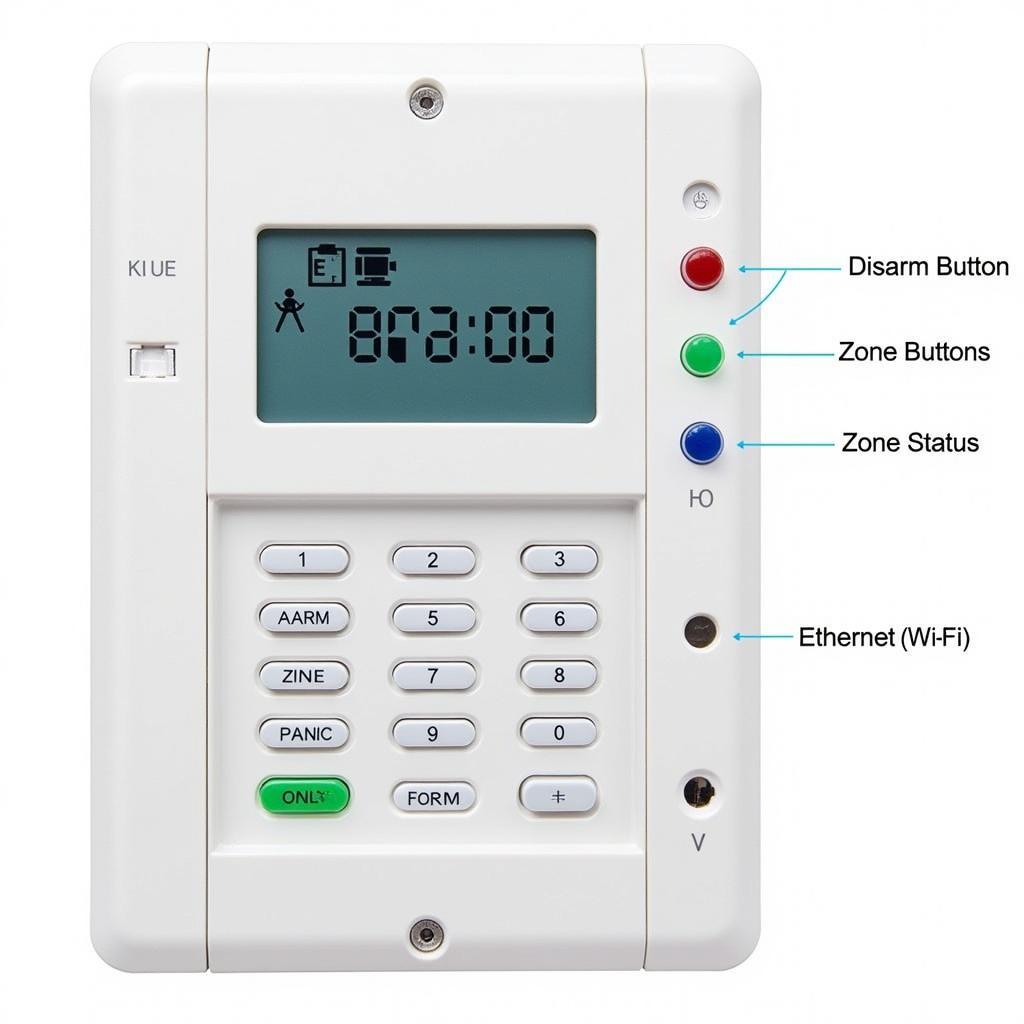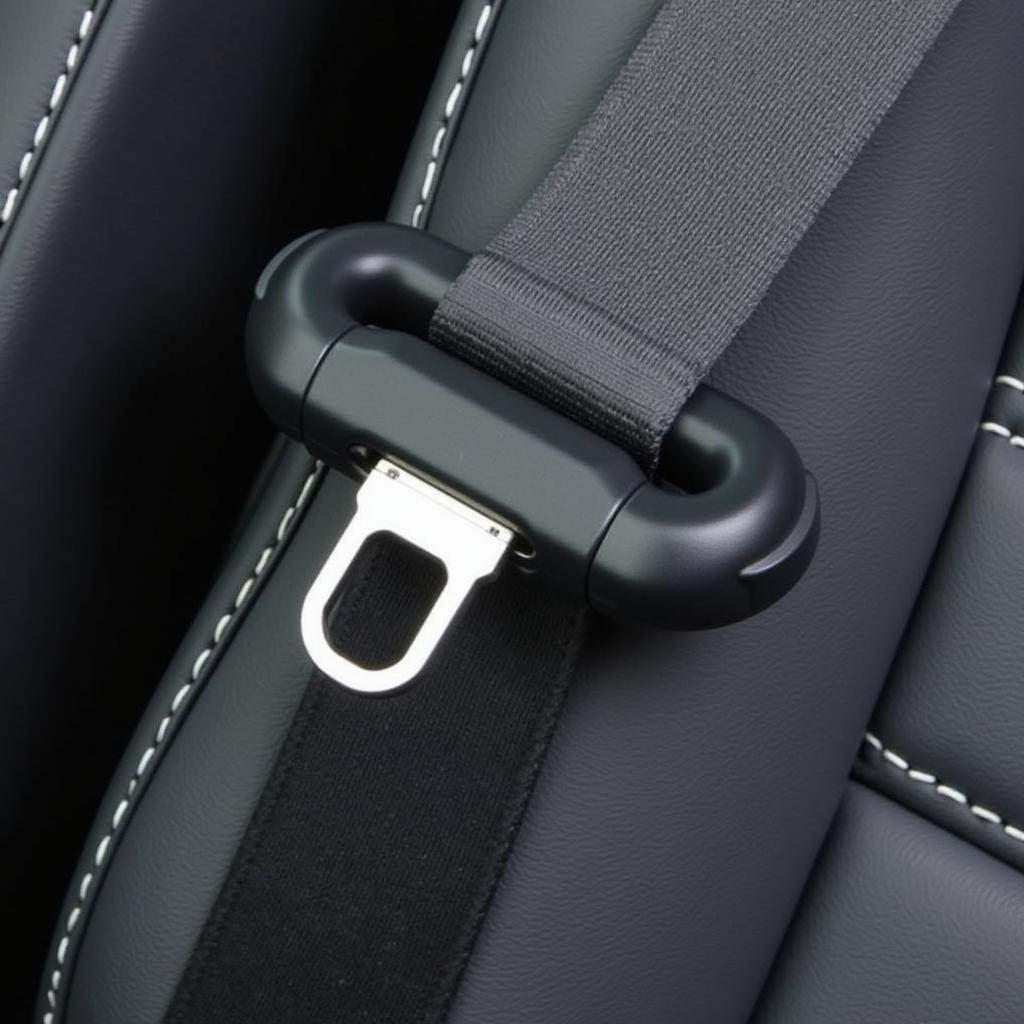Protecting your home and loved ones is a top priority, and a robust anti-theft alarm system is crucial. Building your own DIY home security system can be a rewarding and cost-effective way to enhance your home’s security. This comprehensive guide will walk you through the process of creating an effective anti-theft alarm system tailored to your specific needs.
Understanding the Basics of Home Security
Before diving into the specifics, let’s understand the core components of a typical anti-theft alarm system. These systems generally consist of sensors, a control panel, and an alarm. Sensors detect intrusions, the control panel processes the information, and the alarm notifies you and potentially the authorities. Knowing how these elements work together is essential for building a reliable system. What kind of sensors are best for your home? What features should you look for in a control panel? These are the questions we’ll address.
Choosing the Right Sensors for Your Anti-Theft Alarm System
Selecting the right sensors is crucial for effective intrusion detection. Different types of sensors cater to different needs. Door and window sensors are fundamental, triggering the alarm when these entry points are opened. Motion sensors detect movement within a designated area, providing broader coverage. Glass break sensors detect the sound of breaking glass, adding another layer of security. Consider your home’s layout and potential vulnerabilities when choosing your sensors.
Selecting a Control Panel for Your Anti-Theft System
The control panel is the brain of your anti-theft alarm system. It receives signals from the sensors and activates the alarm when an intrusion is detected. Modern control panels often offer features like remote access via smartphone apps, allowing you to monitor and control your system from anywhere. Some panels even integrate with smart home platforms, enabling automation and enhanced security features.
 Control Panel for Anti-Theft Alarm System
Control Panel for Anti-Theft Alarm System
Building Your DIY Anti-Theft Alarm System: A Step-by-Step Guide
Now, let’s get hands-on. This step-by-step guide will walk you through the process of building your DIY anti-theft alarm system.
- Plan Your System: Map out your home and identify vulnerable entry points. Determine the types and number of sensors needed.
- Gather Your Materials: Purchase the necessary components, including sensors, a control panel, an alarm (siren or other notification method), wiring, and power supply.
- Install the Sensors: Follow the manufacturer’s instructions to install the sensors at the designated locations. Ensure proper placement for optimal detection.
- Connect the Sensors to the Control Panel: Wire the sensors to the control panel according to the wiring diagram provided.
- Configure the Control Panel: Program the control panel to recognize the sensors and set the desired alarm triggers.
- Test the System: Thoroughly test the system to ensure all sensors and the alarm are functioning correctly.
Integrating Smart Home Technology with Your Alarm System
Integrating your anti-theft alarm system with your smart home ecosystem can significantly enhance its functionality and convenience. You can control your alarm system remotely, receive real-time notifications, and even automate responses to specific events.
“Integrating smart home features provides an extra layer of security and control,” says Alex Thompson, a security consultant with over 15 years of experience. “It empowers homeowners to actively manage their home’s security from anywhere.”
Conclusion
Building your own anti-theft alarm system for home can be a fulfilling and cost-effective way to protect your property and loved ones. By following this guide and carefully selecting the right components, you can create a robust security system tailored to your specific needs. Remember to regularly test and maintain your system to ensure its continued effectiveness.
“Regular maintenance and testing are paramount for maintaining the effectiveness of your security system,” adds Sarah Miller, a security system installer with over a decade of experience. “It’s the only way to ensure your system is always ready to protect your home.”
FAQ
- What is the most effective type of sensor for home security? The most effective sensor depends on the specific area you want to protect. Door and window sensors are essential for entry points, while motion sensors provide broader coverage.
- Can I install a DIY anti-theft alarm system myself? Yes, with careful planning and following the manufacturer’s instructions, you can install a DIY system.
- How much does it cost to build a DIY anti-theft alarm system? The cost varies depending on the components you choose, but it can be significantly less expensive than professional installation.
- What are the benefits of integrating my alarm system with my smart home? Integration allows for remote control, real-time notifications, and automation of security responses.
- How often should I test my anti-theft alarm system? It’s recommended to test your system at least once a month to ensure proper functionality.
- What should I do if my alarm goes off accidentally? Know how to disarm your system quickly and have the monitoring company’s contact information readily available.
- Can I connect my DIY system to a professional monitoring service? Some DIY systems offer the option to connect to a professional monitoring service for added security.


